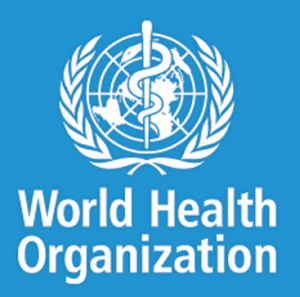Lack of progress on sanitation undermining child survival – UN Report
 A joint report by the WHO and UNICEF has warned that lack of progress on sanitation threatens to undermine child survival and health benefits from gains in access to safe drinking water.
A joint report by the WHO and UNICEF has warned that lack of progress on sanitation threatens to undermine child survival and health benefits from gains in access to safe drinking water.
The final MDG progress report on water and sanitation which was made available to Ghana News Agency, by Fadéla Chaib, WHO Communications Officer, tracks access to drinking water and sanitation against the Millennium Development Goals (MDG).
The Joint Monitoring Programme report, Progress on Sanitation and Drinking Water: 2015 Update and MDG Assessment, says worldwide, one in three people, or 2.4 billion, are still without sanitation facilities – including 946 million people who defecate in the open.
“What the data really show is the need to focus on inequalities as the only way to achieve sustainable progress,” said Sanjay Wijesekera, Head of UNICEF’s global water, sanitation and hygiene programmes.
“The global model so far has been that the wealthiest move ahead first and only when they have access, do the poorest start catching up. If we are to reach universal access to sanitation by 2030, we need to ensure the poorest start making progress right away.”
According to the report access to improved drinking water sources has been a major achievement for countries and the international community.
It said with some 2.6 billion people having gained access since 1990, about 91 per cent of the global population now have improved drinking water – and the number is still growing.
It noted that in sub-Saharan Africa, for example, 427 million people have gained access – an average of 47,000 people per day every day for 25 years.
“The child survival gains have been substantial. Today, fewer than 1,000 children under five die each day from diarrhoea caused by inadequate water, sanitation and hygiene, compared to over 2,000 about 15 years ago,” it said
“On the other hand, the progress on sanitation has been hampered by inadequate investments in behaviour change campaigns, lack of affordable products for the poor and social norms, which accept or even encourage open defecation,” it added.
It said although some 2.1 billion people have gained access to improved sanitation since 1990, the world has missed the MDG target by nearly 700 million people.
It said today, only 68 per cent of the world’s population uses an improved sanitation facility – 9 percentage points below the MDG target of 77 per cent.
“Until everyone has access to adequate sanitation facilities, the quality of water supplies will be undermined and too many people will continue to die from waterborne and water-related diseases,” said Dr Maria Neira, Director of the WHO Department of Public Health, Environmental and Social Determinants of Health.
The report observed that access to adequate water, sanitation and hygiene is critical in the prevention and care of 16 of the 17 ‘Neglected Tropical Diseases’ (NTDs), including trachoma, soil-transmitted helminths (intestinal worms) and schistosomiasis.
It said NTDs affect more than 1.5 billion people in 149 countries, causing blindness, disfigurement, permanent disability and death.
It said the practice of open defecation is also linked to higher risks of stunting – or chronic malnutrition, which affects 161 million children worldwide, leaving them with irreversible physical and cognitive damage.
“To benefit human health it is vital to further accelerate progress on sanitation, particularly in rural and underserved areas,” added Dr Neira.
The report said rural areas are home to seven out of 10 people without access and nine out of 10 people who defecate in the open.
It said plans for the new Sustainable Development Goals to be set by the United Nations General Assembly in September include a target to eliminate open defecation by 2030.
According the WHO and UNICEF this would require a doubling of current rates of reduction, especially in South Asia and sub-Saharan Africa.
WHO and UNICEF said it is vitally important to learn from the uneven progress of the 1990-2015 period to ensure that the sustainable development goals close the inequality gaps and achieve universal access to water and sanitation.
The two UN organisations said to do so, the world needs disaggregated data to be able to pinpoint the populations and areas which are outliers from the national averages.
It also needs a robust and intentional focus on the hardest to reach, particularly the poor in rural areas; innovative technologies and approaches to bring sustainable sanitation solutions to poor communities at affordable prices; and increased attention to improving hygiene in homes, schools and health care facilities.
The WHO/UNICEF Joint Monitoring Programme for Water Supply and Sanitation is the official United Nations mechanism tasked with monitoring country, regional and global progress, and especially towards the MDG target relating to access to drinking water and sanitation.
Source: GNA
